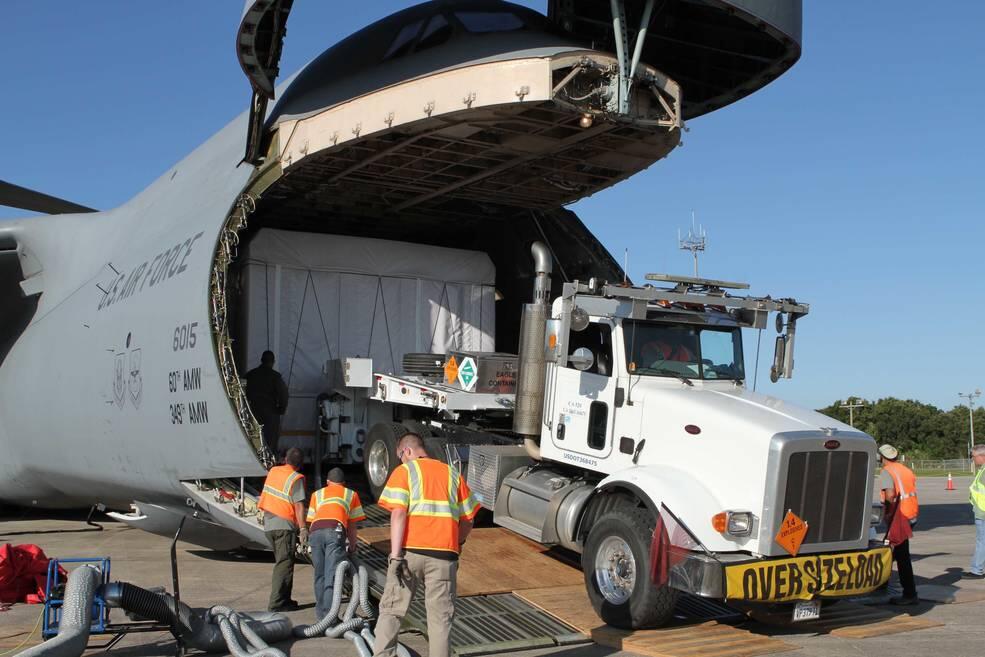NOAA’s GOES-R satellite arrived at NASA’s Kennedy Space Center Shuttle Landing Facility from Lockheed Martin Space Systems, Littleton, Colorado, on Aug. 22 aboard a U.S. Air Force C-5 Galaxy cargo jet.
After its arrival, the GOES-R spacecraft was pulled from its shipping container, and has since undergone additional testing and preparation for encapsulation on top of the rocket that will take it to its geostationary orbit more than 22,000 miles above Earth.
“This milestone is a great achievement for the entire GOES-R team, who have worked tirelessly to get the spacecraft to Florida,” said Greg Mandt, NOAA’s GOES-R system program director. “Moving forward, we are focused on preparing this highly-advanced weather satellite for its historic launch in just a few short months.”
GOES-R is scheduled to launch Nov. 4 at 5:40 p.m. EDT aboard an Atlas V 541 rocket from Space Launch Complex 41 at Cape Canaveral Air Force Station, Florida. The Atlas V has proven a reliable option for NASA’s Launch Services Program the organization that oversees NASA launches and chooses the best launchers for specific spacecraft. GOES-R has a two-hour launch window beginning at 5:40 p.m. on Nov. 4. Additional launch attempts will be made if necessary, such as in the event of severe weather.
GOES-R will be the first satellite in a series of next-generation NOAA Geostationary Operational Environmental Satellites (GOES), which will also include GOES-S, T, and U. These satellites will provide significant enhancements for weather forecasters at NOAA’s National Weather Service, giving them the ability to observe the Western Hemisphere in near-real time. GOES-R will offer three times more spectral channels, four times better resolution, and provide five times faster scans of the Earth compared with current GOES satellites.
GOES-R, which will be known as GOES-16 once it reaches orbit, will become operational following a one-year checkout and validation phase. The satellite’s operational location (either 75 degrees West or 137 degrees West) will be determined by NOAA’s Office of Satellite and Product Operations based on the health and performance of the current GOES constellation.
The GOES-R satellite series is NOAA’s next generation of geostationary Earth-observing systems. The GOES-R Series Program is a collaborative development and acquisition effort between NOAA and NASA. The advanced spacecraft and instrument technology employed by the GOES-R series will provide significant improvements in the detection and observations of environmental phenomena that directly affect public safety, protection of property and our nation’s economic health and prosperity.
Source: NASA











